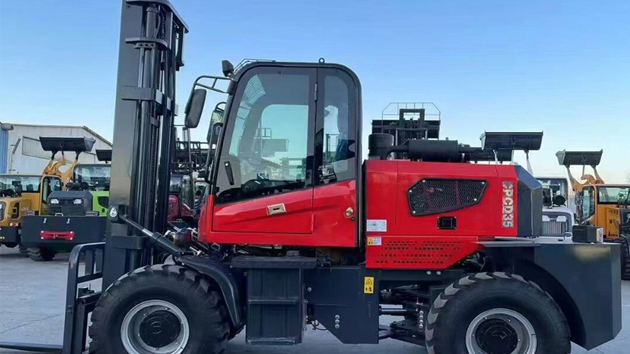Navigating the Rough Terrain Forklift Market: Trends and Projections
2025-07-04 04:20:31
### H1: Market Overview and Growth Drivers The Rough Terrain Forklift market has witnessed steady expansion, with a projected CAGR of 5.8% from 2023 to 2030. The surge in infrastructure development, particularly in emerging economies, is a primary catalyst. These forklifts are designed for challenging environments, making them indispensable in sectors like mining, forestry, and large-scale construction.
### H2: Technological Advancements in Rough Terrain Forklifts Innovation is reshaping the rough terrain forklift market, with manufacturers integrating hybrid and electric powertrains to meet stringent emission regulations. Telematics and IoT-enabled fleet management systems are also gaining traction, enhancing operational efficiency. For instance, companies like Toyota and Caterpillar have introduced AI-assisted load-sensing technologies to optimize performance on uneven surfaces.
### H2: Regional Market Analysis North America dominates the rough terrain forklift market, accounting for 38% of global revenue in 2022, thanks to robust construction activity. Meanwhile, the Asia-Pacific region is poised for the fastest growth, driven by urbanization in India and China. Europe’s market remains stable, with a focus on eco-friendly models complying with EU Stage V emission standards.
### H1: Competitive Landscape and Key Players Leading players in the rough terrain forklift market include JLG Industries, Manitou, and Terex Corporation, which collectively hold over 45% market share. Strategic acquisitions, such as Oshkosh Corporation’s purchase of Jerr-Dan, highlight the industry’s consolidation trend. Smaller firms are differentiating through niche offerings, such as ultra-compact models for confined worksites.
### H2: Future Outlook and Challenges While the rough terrain forklift market shows promise, supply chain disruptions and raw material price volatility remain hurdles. However, the shift toward autonomous forklifts and hydrogen fuel cells presents lucrative opportunities. Stakeholders must prioritize R&D to stay competitive in this evolving landscape.
### Conclusion The rough terrain forklift market is on an upward trajectory, fueled by technological innovation and expanding applications. Industry players must adapt to regulatory changes and sustainability demands to capitalize on emerging opportunities.












